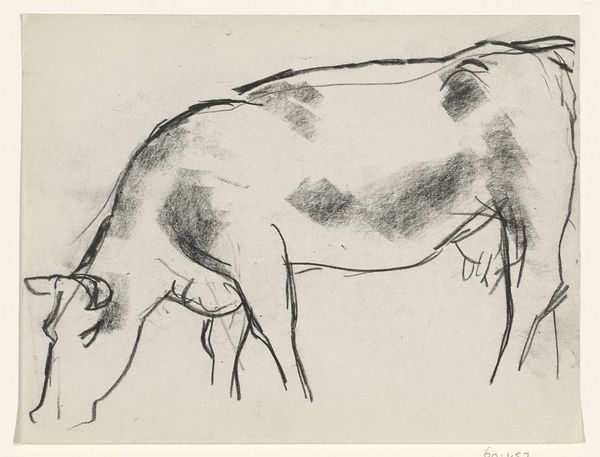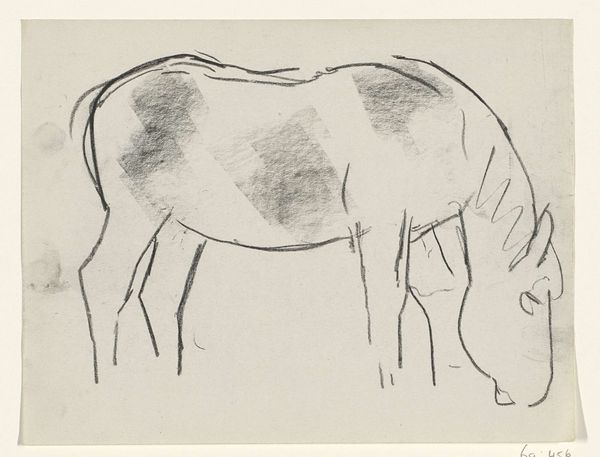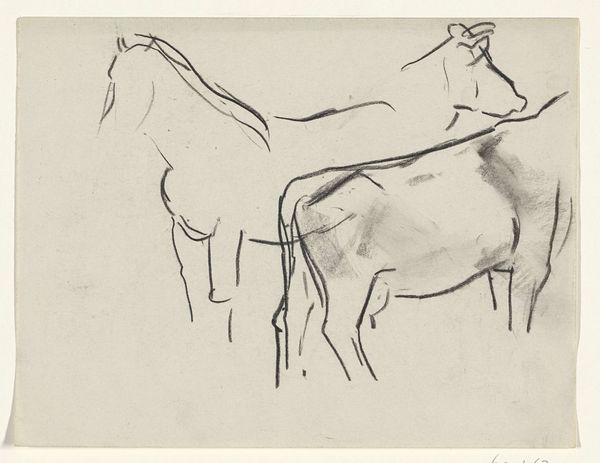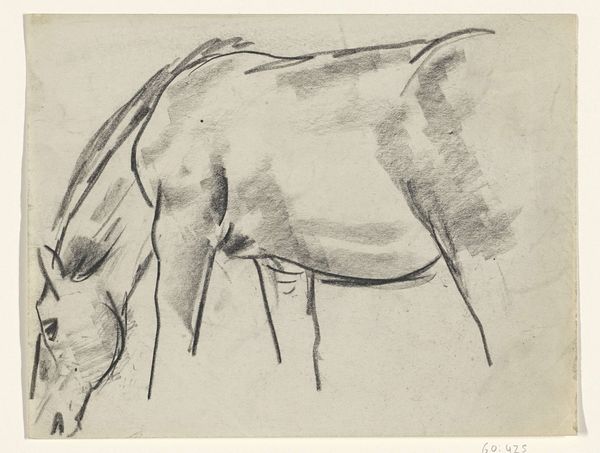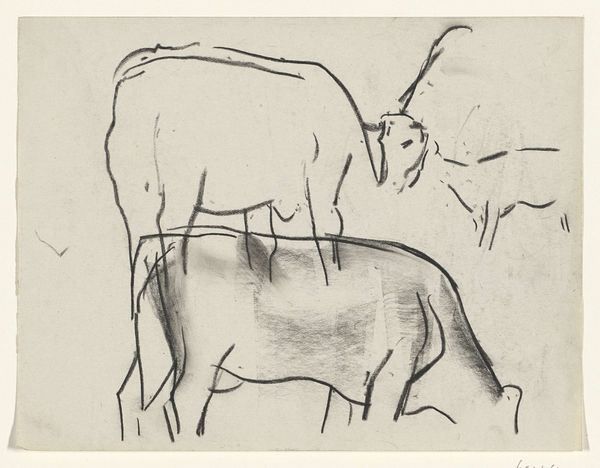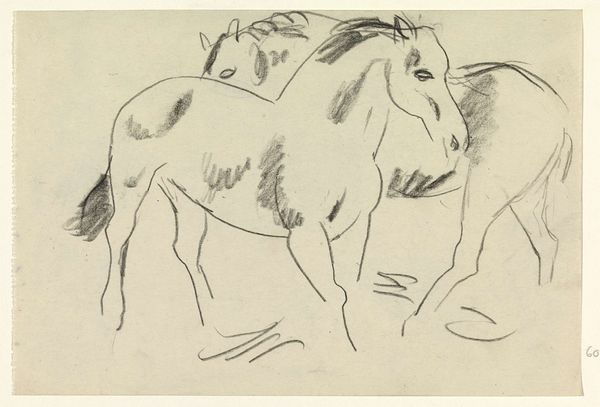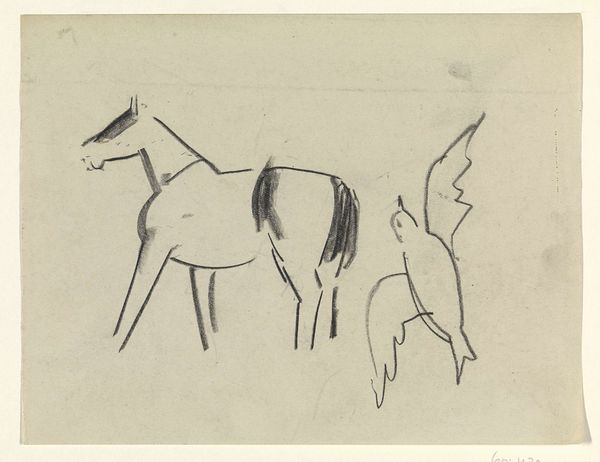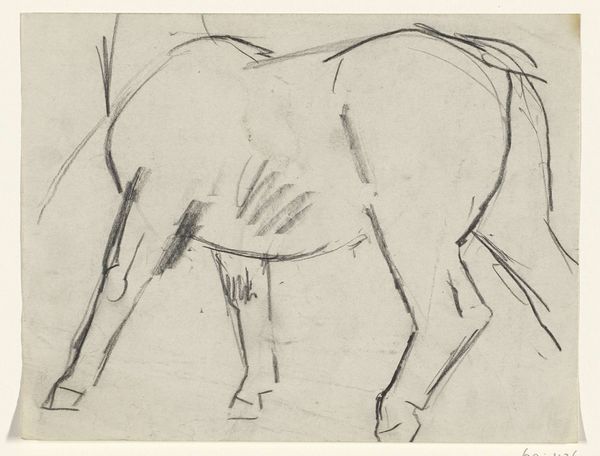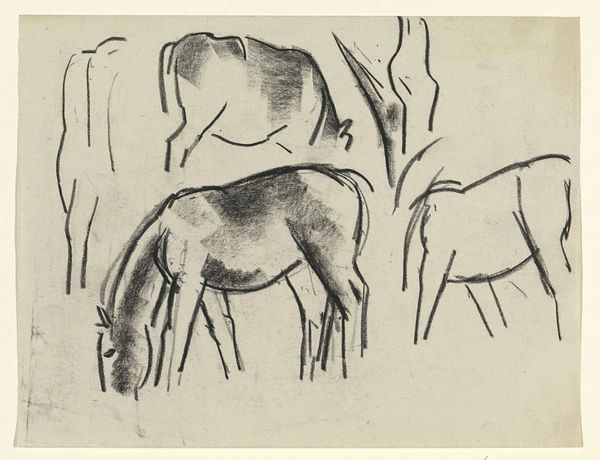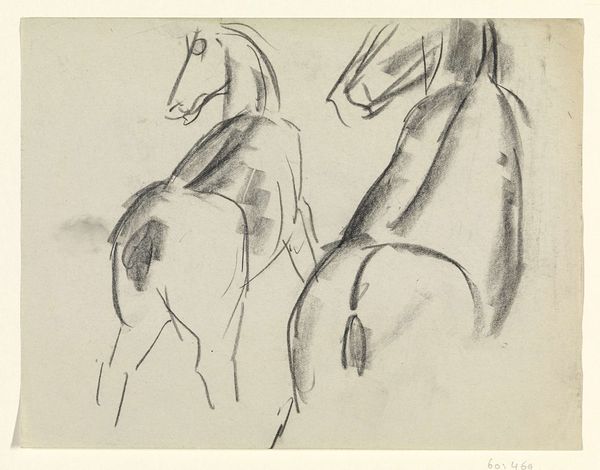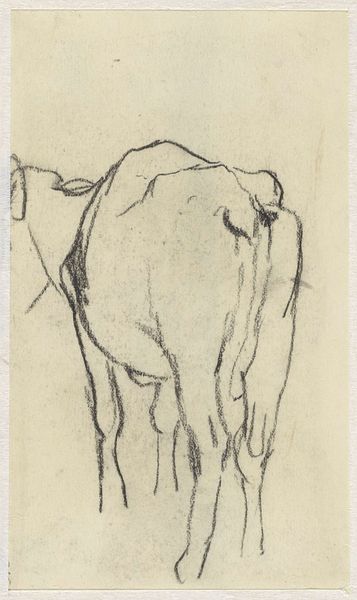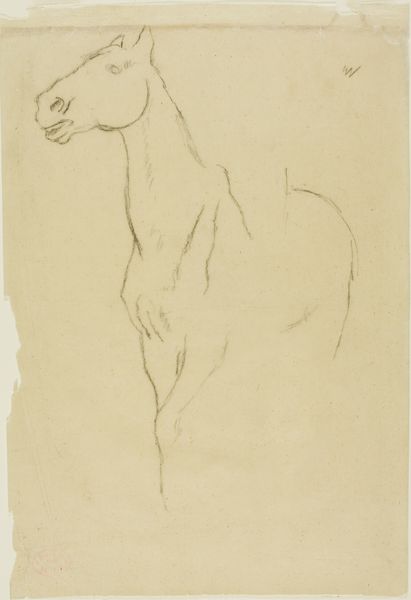
drawing, paper, pencil
#
drawing
#
pen sketch
#
pencil sketch
#
landscape
#
figuration
#
paper
#
pencil
Dimensions: height 163 mm, width 212 mm
Copyright: Rijks Museum: Open Domain
Curator: Leo Gestel's "Grazende Koe," or "Grazing Cow," created sometime between 1891 and 1941, presents a figure in the landscape drawn with pencil on paper. What are your initial impressions? Editor: The piece feels incredibly sparse and raw. Just a few pencil strokes really capture the bulk and weight of the cow. There's something vulnerable in its simplicity. Curator: Gestel, in this drawing, positions a cow, typically a figure of agrarian life, in a way that almost abstracts its form. We need to consider the socioeconomic context—how was the idealization of rural life being deployed, and who benefitted from this imagery? Editor: You’re right to call attention to the cultural construction of the "rural idyll.” Was it truly experienced equally across gender, race, and class? Gestel’s choices here feel interesting in the way that the cow is stripped back to its essence. He is suggesting something deeper. Is he critiquing or celebrating the animal's purpose? Curator: Gestel's body of work went through phases heavily impacted by movements like luminism and expressionism. I think the reduction of the cow to fundamental lines and forms might signal a step toward abstraction, moving beyond mere representational depictions and touching something essential, perhaps its animality, outside any social hierarchy. Editor: Perhaps its “cowness,” not just “cow-as-property.” The looseness in style does suggest movement; its neck bowing downward into the implied grass is quite palpable. But I'm wondering about the missing context. Is it grazing freely, or is there a tether unseen? Those kinds of power dynamics can play on a scene even when invisible. Curator: The Rijksmuseum holds this drawing, amongst his many other drawings and paintings. Gestel became an important figure in the Dutch art scene, especially his treatment of landscapes. In our moment, the idea of what that landscape offers—ecologically and sustainably— becomes much more charged, beyond nationalistic framings. Editor: Absolutely. Looking at Gestel's study now makes you wonder what we expect, and extract, from our surroundings— and whose voices have dominated those historical accounts. Curator: Exactly. It becomes imperative to interrogate these idyllic images to reveal more complex stories around how land, labor, and beings get represented, or erased, across artistic representations. Editor: Thanks to Gestel for prompting this dialogue, intentionally or otherwise, through such economic means.
Comments
No comments
Be the first to comment and join the conversation on the ultimate creative platform.
